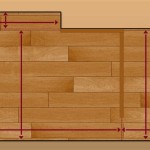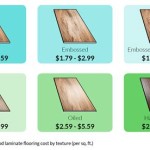Essential Aspects of Vinyl Flooring Installation
Vinyl flooring, renowned for its durability, versatility, and aesthetic appeal, has become a popular choice for homeowners and businesses alike. The installation process of vinyl flooring is crucial to ensure a long-lasting and satisfactory result. Here are some essential aspects to consider:
1. Subfloor Preparation
The condition of the subfloor significantly impacts the performance of vinyl flooring. It should be level, smooth, and dry. Remove any existing flooring or carpet and check for any imperfections. Unevenness can be corrected using self-leveling compound or plywood underlayment. Any moisture issues should be addressed promptly to prevent warping or buckling.
2. Choosing the Right Flooring
Vinyl flooring is available in various types and thicknesses. Consider the intended use of the space, the foot traffic, and personal preferences. Luxury vinyl tiles (LVT) mimic the look of natural materials like wood or stone, providing a realistic aesthetic. Sheet vinyl is a continuous roll that is bonded to the subfloor, offering a seamless appearance.
3. Installation Methods
Vinyl flooring can be installed using different methods. Glue-down vinyl requires adhesive to bond it to the subfloor, ensuring a permanent installation. Peel-and-stick vinyl has a self-adhesive backing that simplifies installation. Click-lock vinyl features interlocking edges that allow planks to be clicked together without glue or nails.
4. Measuring and Cutting
Accurate measurement and cutting are essential for a professional finish. Measure the area to be covered and add a few inches for overlap. Use a utility knife or a vinyl cutter to score and cut the planks or sheets. Ensure precise cuts to prevent gaps or misalignment.
5. Installing the Vinyl
Depending on the installation method, the vinyl flooring can be glued down, peeled and stuck, or clicked together. Follow the manufacturer's instructions carefully. Ensure the edges are aligned correctly and roll or press down firmly to secure the flooring.
6. Trimming and Finishing
After the flooring is installed, trim any excess material around the edges and baseboards. Use a sharp knife or a vinyl cutter for precise cuts. Install baseboards or quarter rounds to cover the expansion gap and enhance the overall finish.
7. Maintenance and Care
Regular maintenance and care will extend the life of vinyl flooring. Use a soft-bristled broom or vacuum to remove dust and dirt. Avoid harsh chemicals or abrasive cleaning solutions. Use a damp mop for deeper cleaning, and dry the floor thoroughly afterward.
Conclusion
Installing vinyl flooring requires careful planning, preparation, and execution. By considering these essential aspects, you can achieve a beautiful, durable, and long-lasting vinyl floor that enhances the aesthetics and functionality of your space.

Vinyl Tile Installation A Comprehensive Guide Gc Flooring Pros

How To Install Vinyl Plank Flooring The Home Depot

Vinyl Flooring Installation From Lowe S

Average Cost Of Vinyl Flooring Installation In 2024 Forbes Home

How To Install Vinyl Plank Flooring In A Bathroom Fixthisbuildthat
How To Lay Vinyl Flooring Sheets Tiles And Planks Tarkett

Installing Vinyl Plank Flooring How To Fixthisbuildthat

How To Install Vinyl Plank Flooring As A Beginner Home Renovation

A Beginner S Guide To Installing Vinyl Plank Flooring Dumpsters Com

Installing Vinyl Floors A Do It Yourself Guide The Honeycomb Home
Related Posts








